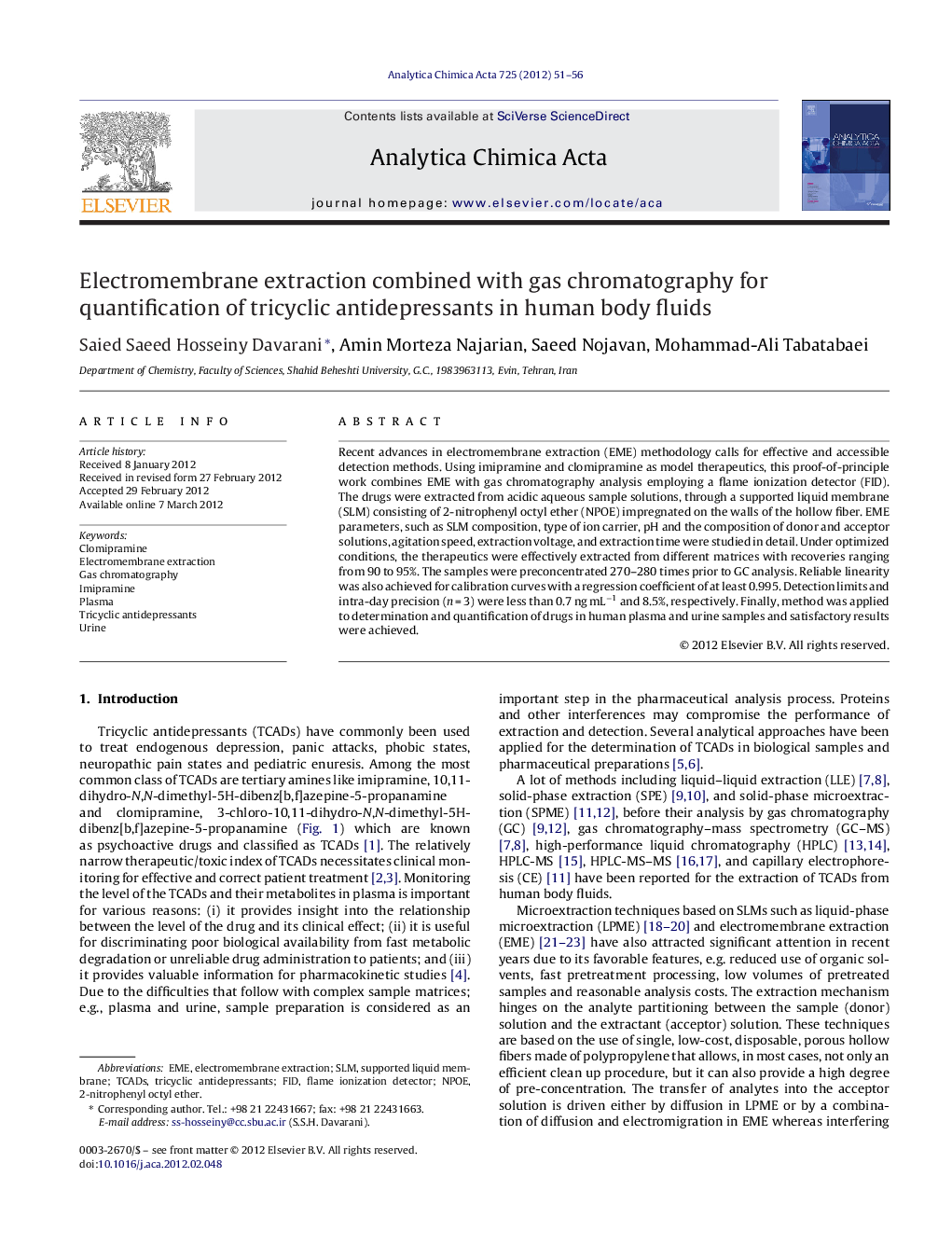| Article ID | Journal | Published Year | Pages | File Type |
|---|---|---|---|---|
| 1166162 | Analytica Chimica Acta | 2012 | 6 Pages |
Recent advances in electromembrane extraction (EME) methodology calls for effective and accessible detection methods. Using imipramine and clomipramine as model therapeutics, this proof-of-principle work combines EME with gas chromatography analysis employing a flame ionization detector (FID). The drugs were extracted from acidic aqueous sample solutions, through a supported liquid membrane (SLM) consisting of 2-nitrophenyl octyl ether (NPOE) impregnated on the walls of the hollow fiber. EME parameters, such as SLM composition, type of ion carrier, pH and the composition of donor and acceptor solutions, agitation speed, extraction voltage, and extraction time were studied in detail. Under optimized conditions, the therapeutics were effectively extracted from different matrices with recoveries ranging from 90 to 95%. The samples were preconcentrated 270–280 times prior to GC analysis. Reliable linearity was also achieved for calibration curves with a regression coefficient of at least 0.995. Detection limits and intra-day precision (n = 3) were less than 0.7 ng mL−1 and 8.5%, respectively. Finally, method was applied to determination and quantification of drugs in human plasma and urine samples and satisfactory results were achieved.
Graphical abstractIn this study electromembrane extraction (EME) procedure was combined with GC-FID for quantification of tricyclic antidepressants (TCADs) in human body fluids.Figure optionsDownload full-size imageDownload as PowerPoint slideHighlights► Electromembrane extraction of tricyclic anti-depressants (TCADs). ► Combine EME with GC-FID detection. ► Direct water injection to GC capillary column. ► Extraction of TCADs from human body fluids. ► Enrichment factor higher than 215 with 2 mL sample solution.
